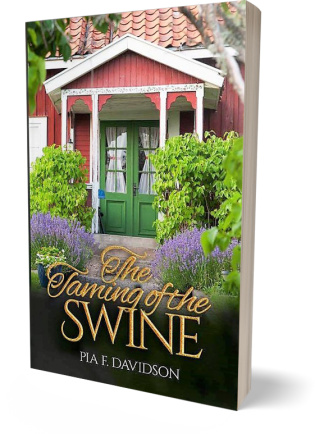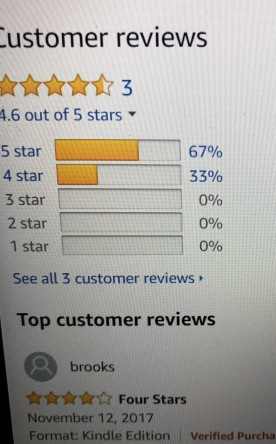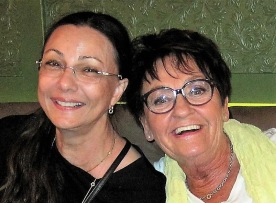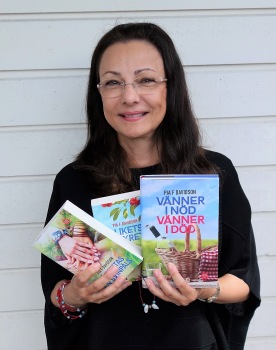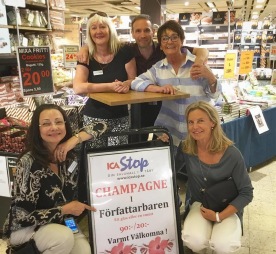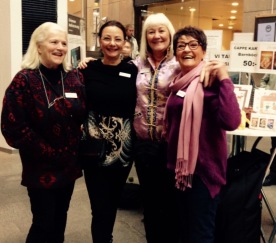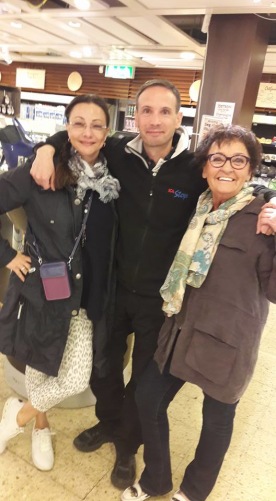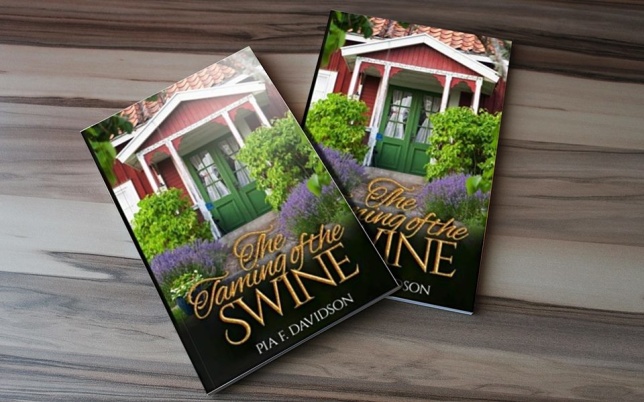
My name is Pia F. Davidson and I was born in 1956. I grew up and have lived in several of Stockholm’s suburbs. My education includes meat, processed meat, cheese and fish, as well as supervision and management within retail. This is my first novel. I live with my husband and a part time dog in Stockholm Sweden. A very special part in my heart is left in Fort Myers Florida where my husband and I lived for 15 years.
Unfortunately, my parents are no longer living, but they have both been of great help throughout my writing process. My cunning father is even a character in the book. My mother introduced me to books early in life, and for that I am eternally grateful. Naturally, they would have been proud that I have written a novel worthy of being published. But it is quite possible they would have been horrified by some of the content.
Selected passages from the book
From chapter 9
Things got quiet around the table. After a while Erika said:
“And I thought I had it bad.”
She laid her hands over Miriam’s, which were clenched tightly on the table; Veera placed her hands on top of Erika’s. They sat like that for a while, in the warmth and closeness of one another. A whiff of Erika’s jasmine scent wrapped around Miriam and made her feel safe.
“I’m involved with a miserable swine too,” said Veera, breaking the silence. “I’ve been depressed for a long time now and can’t sleep.”
Miriam unwove her hands that were furthest down in the pile and laid them on Veera’s.
From chapter 30
It had to be him: the same jerky body language, the same broad shoulders, and the same pale face and brown curly hair. It had gotten thinner, but there was no doubt about it: it was him. He had a barely perceptible limp that he hadn’t had back then, and it was probably because of her. The thought sent a burst of self-esteem through her.
From chapter 35
The smell of warm, newly slaughtered pig washed over Veera in the doorway. It was an odor she hadn’t smelled since she worked at the slaughterhouse in Johanneshov more than forty years ago. Strange how certain scents didn’t fade from your mind.
To the left just inside the door, a man in blue jeans and a leather jacket was lying flat on his stomach. He was wearing vinyl gloves on his hands, and his head was covered by a black balaclava. An enormous puddle of blood was pooling around his head.
From chapter 36
Bruno, who was closest to the corpse’s head, backed his walker out through the front door. Veera didn’t blame him. Bruno’s exist decimated her chances of getting out of this.
Before she had time to think harder about this, Bruno came back. Supporting himself on his truncheon, he hobbled over to the corpse’s head, bent over, and ripped the balaclava off with a single firm upward motion. The head returned to its original position with an unpleasant thud, followed by a sticky splash.
Holding the balaclava at arm’s length, Bruno hobbled out the front door. Almost immediately, he returned with the walker and a well-used, checkered blue hankie.
“But … what did you do with the balaclava?” Harri asked.
“The dog,” Bruno replied calmly, nodding at the neighbor’s and sucking in air between his teeth.
Four mouths opened in Bruno’s direction. Unconcerned, he wiped one hand on the handkerchief. Once he was done, he stuffed the hankie in his right pants pocket.
“But …” Veera said.
How were the police going to deal with the fact that the balaclava the corpse had been wearing was currently being used as a chew toy by the neighbor’s dog?
The taming of the swine
Target group
The book is written primarily for women aged 30 and older.
Genre
The book belongs to the Chick-Lit/Thriller categories and includes relationships, tall tales and feel-good elements.
Approximately 500 pages long.
Synopsis
The story takes place during 12 days in June and is about three women and their problems with their respective partners. Erika is a nurse’s aide; Miriam, a buyer of lingerie; and Veera, a butcher. They are between 32 and 62 years of age.
Veera, Miriam and Erika meet for the first time early one summer evening in a community garden outside Kallhäll, a suburb of Stockholm. Erika has just learned that her partner no longer loves her, and in despair she runs away to escape from what she perceives as a poisoned atmosphere at home. Miriam is on the run from her violent partner and has just left her mother’s deathbed. Through friends of friends, she has been able to borrow a small cottage in the community garden where she plans to spend the next few days trying to get her life in order. Veera has travelled by bicycle from her apartment in Kallhäll to her cottage in the community garden, which also serves as her retreat to gain some breathing space from her alcoholic husband.
The women get together, comfort each other and share their experiences over some strong drinks. After a few hours, they take a taxi to Erika’s place to eat a late dinner. Erika’s partner, Mathias, isn’t happy, but by joining forces, the women manage to ignore his protests and the evening ends with them sleeping over in Erika’s recreation room.
The next day, they agree to help each other solve their problems. Erika needs help in convincing both herself and her partner that he should pay back the money she has invested in his house, even though they do not have a Cohabitation Agreement. Veera needs a fail-safe plan to get her husband either to stop drinking or to drink himself to death as quickly, and with as few financial and other consequences, as possible. The hardest nut to crack will be eliminating the determination Miriam’s partner, Max, has to hurt her.
Veera ponders awhile, asks a few questions, and, with the help of her lively imagination, works out a plan that would become Max’s worst nightmare. When she reveals the plan to Miriam and Erika, a shocked silence descends over them. The plan not only is repulsive, but if it goes wrong could also result in a jail sentence, hefty fines or damages, or, in the very least, probation for the person or persons performing the dirty job - that is to say, Veera, Miriam and Erika. If things were to go badly, the women comfort themselves with the belief that the deed will at least gain them great respect among their fellow prisoners.
The road leading away from their hopeless life situations will be difficult and full of complications but it also will be uplifting. Miriam wavers between her conflicting feelings for her partner, Max. She struggles with her menopausal discomforts and tries to interpret her peculiar dreams. Veera reconciles herself to her situation and puts all her energy into the present, savouring the fact that she can finally start to live. Even when she is so afraid that her knees are knocking, she feels that her life is comparatively good now. Erika discovers that she actually does not like her partner, Mathias, and even if it will take time for her to find herself again, she realizes that she actually has been very lucky.
Despite the fact that many events do not go as planned, things end happily – or do they? An observant eye can detect a dark cloud on the horizon.
I am at work on a third book of a trilogy I plan for Erika, Miriam and Veera.
Purpose of the book
The purpose of the book is very ambitious, namely to increase the readers’ experience of joy, faith and hope! Or as Veera would say: “It should feel like plunging your feet into a pair of down slippers on a cold day.”
Why this story?
Personally, I would like to read about ordinary people who live in the suburbs and have regular jobs. I find nothing wrong with the many books about cultural workers, police, state or municipal employees or people living in the fashionable inner city, but I am overdosed on these and long for something different.
About the author
My name is Pia F. Davidson and I was born in 1956. I grew up and have lived in several of Stockholm’s suburbs. My education includes meat, processed meat, cheese and fish, as well as supervision and management within retail. This is my first novel.
One thing I knew for certain is that the book would focus on ordinary women who live in a suburb and have regular jobs - women similar to those I have had the privilege of working with. Then I would introduce them to a number of difficult problems that they would have to take on good heartedly and use a ready wit to solve. One night when I could not sleep, the character of Veera came to me. She was pushing a gray, worn out shopping cart full of empty bottles, and, ominously, she had the head of a man wrapped within a number of shopping bags. After that dream, the writing start to flow, and the joy of storytelling began.
Unfortunately, my parents are no longer living, but they have both been of great help throughout my writing process. My cunning father is even a character in the book. My mother introduced me to books early in life, and for that I am eternally grateful. Naturally, they would have been proud that I have written a novel worthy of being published. But it is quite possible they would have been horrified by some of the content.
I hope the preceding has been informative and interesting. If you would like more information, please contact me. You may also read more on Facebook, where I have an author’s page:
Sincerely,
Pia F. Davidson
piase@outlook.com
piase@comcast.net
The Taming of the Swine
Prolog
“Contentedly I sit
Just feeling hunky dory,
The peace around my home
Is filled with summer’s glory;
Scents of hay and clover
Are heavy in the night,
And rocking off to sleep
Is my jasmine all in white.”
Pälle Näver
Veera |Kallhäll - Monday, 20 June
Veera Eloranta carefully guided the pig head through the saw. As the saw blade screeched its way through the pig’s teeth, she felt a sharp pain in her own. That was the only animal part she was averse to cutting. Or one of them, to be more exact – frozen liver was not all fun and games either, especially if cleaning the saw afterwards was included in the job. The blood glued itself to the saw blade and took forever to remove. Marrow bones from large cows were also a pain, for that matter. Sometimes they were so compact that the saw blade would overheat.
She was surprised when she received an order for the halved pig’s head since people usually made savory jellies at Christmas time, but this customer planned to surprise the relatives with homemade aspic at Midsummer. But after all, the customer wasn’t Swedish. Cooking seemed to be a dying art these days, reserved for pretend chefs who wanted to make fancy food like on TV.
Veera plopped the remaining pig half onto the butcher block and made a few familiar cuts with the knife to mark where she would saw off the ham and shoulder. She returned briefly to the wall-mounted counter that served as her desk to check the orders that had come in. One pork loin rack, a pork collar, and a two pound ham with the bone in the middle.
She sighed; a two pound ham with the bone in the middle was physiologically impossible. She had patiently explained that to the customer but he insisted that it had been done for him before. She retorted that if it were so, it must have come from a pig that had starved to death. That had made him a little grumpy but he finally resigned himself to accept the facts. That same customer had also requested juicy pork chops without any fat. At that point, Veera realized that there was no use in arguing, and bit her tongue.
She was dying for some coffee and glanced at the clock on the wall. She figured she might as well finish the pig first.
After another half-hour she had cut up, weighed, and priced the parts. What she had left was a pile of bones, pigs’ feet, scraps, and fat to be packaged and displayed in the meat counter. But that would have to wait until after her coffee break. She rolled the rack carrying the items to be packaged into the cold room, and then went down to the basement lunchroom. Most likely the coffee had already been transformed into tannic acid, but she could make a little more. She refused to drink the coffee from the cafeteria vending machine.
Just as she lifted the cup of fresh brewed coffee to her lips, her cell phone beeped. She pushed her apron aside and fished the phone out of her pants pocket. Her brother Marko had sent a picture. At first she couldn’t tell what the picture was, but after a while it became clear to her that it was a bush, a huge bush with white flowers. All of a sudden it came to her; Marko had said that he was going to spend the weekend in Sibbo outside of Helsinki. When she had heard, she had asked him to send a picture of the jasmine bush. Wow, how that bush had grown! She hadn’t seen it for many, many years. Amazing how something so beautiful and sweet smelling could result from something so horrible. But of course she knew that – everyone had some good in them, and even miserable swine could bring joy to those around them if given a taste of their own medicine.
The picture reminded her of her own newly-planted jasmine bush. She was anxious to see if it had grown at all since she last saw it.



